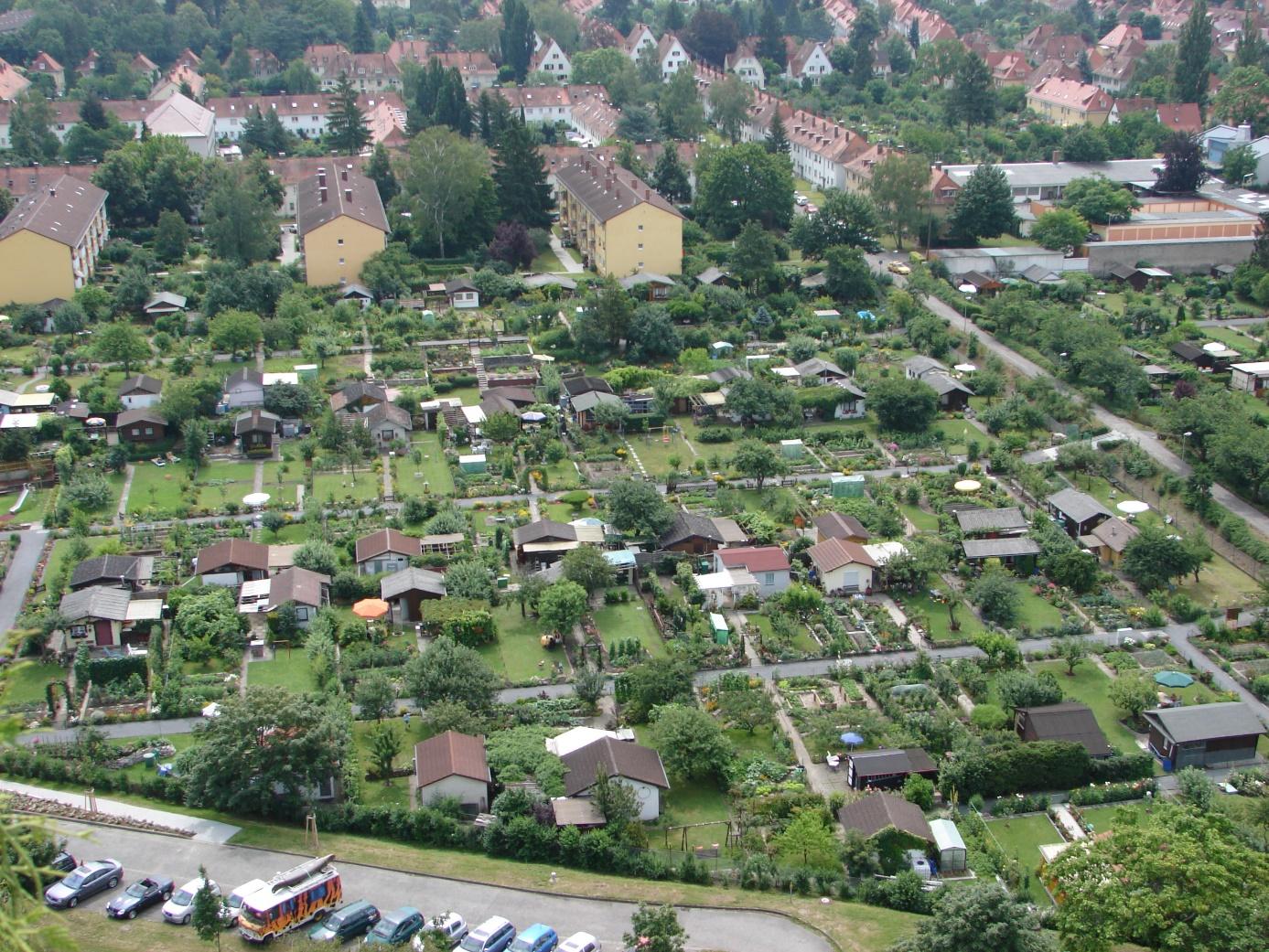
Introduction:
Allotment gardens are a well-established tradition across many European countries and nowhere more so than in Germany, where these small and distinctive plots form a characteristic feature of many towns and cities. The German Federal Allotment Garden Federation (BDG) is the umbrella organisation and representative body of the allotment and leisure gardeners’ associations within Germany. The key aims and focus of the Federation are the promotion of allotment gardening, the allotments themselves and the diverse social communities which they help to nurture and support. In addition, the protection of nature and landscape are important responsibilities for the BDG. The Association is a non-governmental and not-for-profit organisation which is based in Berlin.
Background to the allotment garden movement:
The allotment gardens provide opportunities for urbanities and municipalities to come into contact with nature and for enhancing local sustainability within neighbourhoods. The gardens make cities greener and more attractive places in which to live, and develop a tradition which stretches back 200 years or so. During this time, the gardens have adapted to changing societal conditions. In doing so, they have responded to new influences and challenges without compromising their overall green character and function. Across Germany, the BDG and its predecessor organisations have represented the interests of allotment gardeners at national level since 1921.
Allotment gardens still fulfil the dream of countless city dwellers to manage a small piece of greenery within the urban area. These areas contribute to the quality of life for a large and diverse cross section of society, including young urbanites, young families and people from socially disadvantaged backgrounds.
The BDG responds to changing societal conditions, evolving lifestyles and to individual choices, which it believes, enrich the character of allotment gardens. It considers that everyone should have the opportunity to contribute, develop and flourish through their involvement in allotments and believes that the movement should draw strength through offering consistency and innovation; in this respect, small gardens equate with colour and diversity!
The association stresses the importance of passing on horticultural expertise to future generations. Consequently, education and training has always been at the heart of the association. Other important messages include the importance of natural gardening methods, the need to ensure biodiversity and soil protection, the role of nature in urban planning and the foundations of environmental education. Openness, transparency and public engagement are core values that the BDG promotes.
Some Allotment gardening FACTS from Germany:
- Almost 902,000 allotment gardeners are organized under the umbrella of the German Allotment Garden Federation.
- Around 5 million people use an allotment garden (including family and friends) through 13,453 participating local associations.
- There are 512 regional associations (city, district and regional associations) and 20 state associations under the umbrella of German Federal Allotment Garden Federation (BDG).
- Allotment gardens are an average of 370 m². However statistically, it is 438 m², when associated areas of greenspace and service facilities are included. That equates to a huge 44,000 hectares of valuable green infrastructure across Germany.
Popularity is increasing:
Despite a somewhat traditional image, there is currently huge demand and a resurgence of interest in allotment gardens. In fact, in large cities, such as Berlin or Munich, there is a long waiting list to rent a plot and it can take four to eight years from the time of registration for an allotment to become available. However, in other federal States such as Lower Saxony, Saxony-Anhalt or Schleswig-Holstein, this process is generally much faster. Overall, with luck, it should be generally possible to secure an allotment garden within 2 years.
In some parts of Germany, however, particularly in the east of the country, there is an overprovision, and there are vacant plots available. More than half of all allotment gardens – equating to half a million plots – are located in the former East German states, which has a population of only 15 percent of the national total. In this respect, the state of Saxony is the clear leader with almost 190,000 allotment gardens.
There is therefore a need to balance the provision of allotments across Germany and to ensure that supply is sufficient in areas of population growth and high demand, a process that can best be described as demand-driven development of allotment gardens.
Allotment Gardening across Europe:
The BDG is a member of the Fédération Internationale des Jardins Familiaux a. s. b. l., the largest European leisure garden organization with over three million allotment families and allotment gardeners from 14 countries. www.jardins-familiaux.org
Source: https://kleingarten-bund.de/de/ (translated, adapted)






